Strategy September 02, 2015
Wearables Trendsetters
Wowing clients to changing the very nature of their industries, these gurus set the bar for apparel.
Wowing clients to changing the very nature of their industries, these gurus set the bar for apparel.
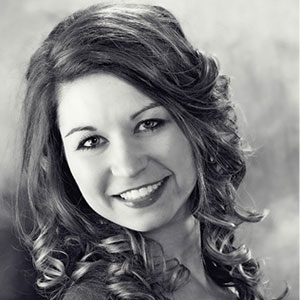
Kara Ward
Corporate Image Consultant, City Apparel
When reflecting on her recent sales success, Kara Ward cites a bit of wisdom gleaned from her grandfather: “Why play a game if you’re not playing to win?” After several years of impressive numbers at City Apparel in Findlay, OH, it’s obvious Ward has taken his words to heart. Today, she’s a corporate image consultant and a newly elected board member of the Ohio Promotional Professionals Association. And in three of her five years at City Apparel, she’s reached over a million dollars in sales. But it wasn’t an easy road. Just a couple years into her promotional career, Ward was diagnosed with breast cancer. “It was a hard year,” says Ward, who is currently in remission, “but I already had my goals set, so nothing was going to stop me. The team had my back 100% and helped me live my life normally. When I wanted to go visit eight clients at a time, they never said, ‘No, you’re not up to it.’ They’d say, ‘Ok, let’s go,’ and they’d drive me.” At the end of that year, Ward reached more than $1 million in sales for the first time. “I very much have my eye on the prize,” she says.
Fun Fact: Ward teaches lyrical and jazz dance four nights a week.

Cary Heller
Vice President of Sales, All USA Clothing
For Cary Heller, every sale is the best one of his life. “I know it sounds corny, but it’s true,” says the vice president of sales at Keego Harbor, MI-based All USA Clothing. A people person who emphasizes the business value of “being nice,” Heller loves connecting with customers, counting them as friends rather than just clients. He also carries a torch for made-in-America clothing and winning high-profile converts, including the White House. “The textile and garment industry was a thriving American industry for decades,” Heller says. “We are bringing American-made clothing and uniforms back.” When he’s not working, Heller is likely to be volunteering at The Friendship Circle, a charity which pairs typical teens with children with special needs. For the last decade, Heller has spent 20 to 30 hours a week mentoring a boy with extreme autism and cerebral palsy. “He has really become like my adopted child, and I cannot express the depth of my relationship with him,” Heller says. “I have learned that when you help someone else, the person who is really being helped is you.”
Fun Fact: An accomplished trumpet player, Heller’s band had a number-one record on NPR and college stations nationwide, and was Ray Charles’ opening act.
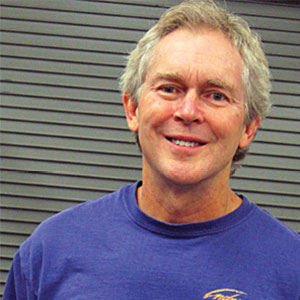
Andy Anderson
Owner, Anderson Studio Inc. (asi/121990)
Andy Anderson, owner of Anderson Studio Inc. in Nashville, provides contract screen-printing work for some of music’s biggest stars. But after printing his first shirt in 1971, he almost never did it again. “I hated it,” he says. “We didn’t have the same educational resources. You basically asked a friend how they did it.” His first “machine” was a wooden Coke case, and his assistant was his 8-year-old sister. He stretched the shirt over the case, used super-sticky flock adhesive in only one color, and knew nothing about meshes. His primitive equipment and methods made the process frustrating, so Anderson gave it up. Then in 1975, he ran into art school friends who introduced him to actual machines and quality inks. He opened Anderson Studio the next year. The company’s location in Music City boded well for a future in entertainment merchandise. Since the early 1980s, Anderson and his team have won almost 90 awards for their full-color prints. “Quality work is how we built our reputation,” he says. “I care about what goes out the door, and my staff makes it all possible. I appreciate each and every one of them, and they all contribute to our success.”
Fun Fact: Since the age of 14, Anderson has built and painted motorcycles, building up an international fan base. One of his bikes was exhibited at the London Museum of Art.
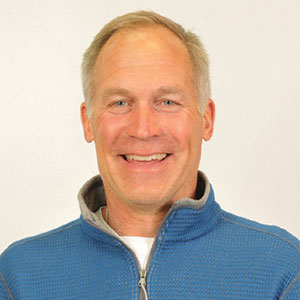
Doug Jackson
President, Storm Creek (asi/89879)
This tailored “kirigami” vegan leather trench by Byron Lars stands out with its laser-cut, lace-like pattern and bold metallic belt buckle.
Decoration Tip: Sometimes good design is about taking something away, rather than adding on. With a sharp pair of scissors and a creative plan, a decorator can manipulate even the most mundane T-shirt into something unique.

James Park
CEO and Co-Founder, Fitbit
James Park was an out-of-shape gamer when he came up with the idea for the Fitbit. One of the first in line to buy the popular Nintendo Wii nearly a decade ago, Park saw the potential of combining motion sensors and software, with a focus on better health. In 2007, the serial entrepreneur and former cross-country runner started the ubiquitous fitness tracking company with business partner Eric Friedman as part of his own efforts to get fit. When the product launched two years later, it already had drawn huge consumer interest, generating more than 25,000 initial orders. “It was the right product at the right time at the right price point,” Park told Forbes. The interest has continued to grow, with much-hyped products like the Apple Watch unable to make much of a dent in the company’s market prominence. With more than 20.8 million devices sold, Fitbit accounts for 85% of tracker sales, according to The NPD Group. The publicly traded company is worth more than $8 billion, and it’s clear that no one is doing more than Park and Fitbit to legitimize wearable technology in the minds of consumers.
Fun Fact: Park dropped out of Harvard before finishing a degree in computer science.

Marci Kinter
Vice President of Government & Business Information, SGIA
When Marci Kinter first started with SGIA in 1989, she had her work cut out for her since no one had stepped in front of regulators to represent the printing industry. “It was really critical that we were in there talking to them about the differences in the industry,” says Kinter, who remembers the difficulty of regulators to simply distinguish between graphical and textile printing. The vice president of government & business information for SGIA quickly became one of the most important assets for the printing industry, cutting her teeth on clean air legislation in the early years, and leading the charge on a number of key issues today: safety and health, environmenal regulations, product safety and sustainability. Equally important, she is a fount of knowledge, endlessly fielding questions from members who can’t be bothered or can’t grasp the wealth of byzantine regulations. She revels in the complexity of it. “You have to look at it in terms of a domino game,” she says. “If I push this piece down here, what do I think will be the final outcome?”
Fun Fact: Kinter is a “closet environmentalist” who likes to garden and do her own canning, and lives in a passive solar house.

Jay Feinberg
Owner, FPS Apparel (asi/53475)
The next step in Jay Feinberg’s career didn’t exist after he left Richard A. Leslie Co. after seven years as a national sales manager. So Feinberg created it. “When I left them, I couldn’t find a job that would take advantage of my knowledge and capabilities, so I started my own company,” Feinberg says. Thus, FPS Apparel was born 15 years ago, with a desire to be different and innovative – to “offer unique, desirable apparel that customers cannot find elsewhere.” Based in Florida, NY, Feinberg has created an entire apparel line with custom accents – sublimated hoods, sleeves, pockets and more. In addition, the decorator has greatly expanded its roster of techniques while making a push toward PVC-free inks. Feinberg’s passion is geared toward building trust with his customers, keeping the quality of FPS’s goods top-notch and innovative, and building a solid team with all parts working together. He’s proud of “growing from a one-person startup to a business serving customers that are nationally recognized household names – while maintaining our headquarters on Main Street in a small town.”
Fun Fact: To keep the presses humming during a blackout, Feinberg once chased down a utility truck, begging them to fix FPS’ electricity.

Jennifer Grigorian
Vice President of Marketing, Hit Promotional Products (asi/61125)
There might not be anyone more passionate about the promotional product industry than Jennifer Grigorian, who has always felt this industry was right for her. She stumbled upon this path by accident, answering phones as a temp for a distributor when she was in college majoring in psychology. “I really could not see myself in any other industry, I truly love what I do,” says Grigorian. The VP of marketing for Hit Promotional Products has been in the industry 19 years, and juggles a number of roles for the fast-growing supplier, including overseeing the product selections and strategies with Hit’s recent move into apparel – a key development as more suppliers move into wearables and offer one-stop shopping. Grigorian is driven to stay current (“You need to constantly evolve and change,” she says) and continues to enjoy the opportunity to be creative and innovative with fun products every day. “This is the greatest industry in the world,” she says.
Fun Fact: Grigorian grew up in Southern California and has never seen snow before.
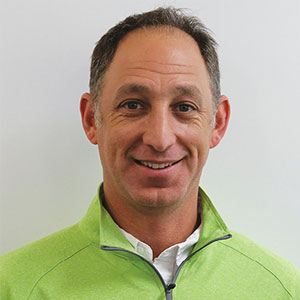
Danny Gruninger
CEO, Image West Signature Apparel
For Danny Gruninger, life in the fast lane used to mean drag racing. But the industry wasn’t a mystery to Gruninger, whose parents ran a small trophy and awards business. He eventually gave up his professional racing career, but is finding success as CEO of Image West Signature Apparel, a Lakewood, CO, decorator. Gruninger and his brother Brandon started the company (formerly known as US Recognition Apparel Division) in 2006 with just one manual press, but have ushered the company through tremendous growth, due in part to the company’s amazing artistic prints. “We have the best art team in the world, and our passion is to bring their designs to life on the garments we embellish,” says Gruninger, whose company has won multiple decoration awards. Image West continues to push forward: adding a state-of-the-art dye house, working closely with Roq International to optimize its equipment and relentlessly tweaking to maintain its top-notch print and garment quality. Says Gruninger: “Lots of long sleepless hours testing new techniques and dialing in our process is certainly one aspect that separates us from the average printing shop.”
Fun Fact: Clips of Gruninger’s drag races can be found on YouTube.
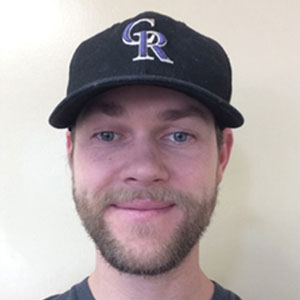
Rich Medcraft Owner, StitchWise
Owner, StitchWise Embroidery Design
StitchWise Embroidery Design is literally a one-man show. Owner/sole proprietor Rich Medcraft makes sales calls, quotes jobs, purchases inventory, creates logos, runs the machines, ships orders and keeps the books, all while producing exceptionally detailed embroidery work for discerning clients. “I’m constantly driven to perfect embroidery as an art form,” he says. “I learn something new every day with every design I create. I pay attention to every detail. I’m not afraid to try different digitizing techniques to see what the results are.” Medcraft, who hails from Eagle Point, OR, likes to make designs using specialty threads, including the finer 60 weight. “They make my designs look sharper,” he says. “I can create smaller detail, and allow my work to stand apart from my competition.” Recently, he demonstrated his expertise by digitizing the logo for the Ladies Professional Golf Association’s Solheim Cup tournament. “It was complicated and had to be super tiny,” says Medcraft. “They also wanted the cup to look like crystal. So I made it out of metallic threads and used special blends. It’s in production now for the 2015 Solheim Cup.”
Fun Fact: Medcraft restores old British sports cars and taught himself all aspects of automobile restoration. He still has his father’s beloved 1957 MGA.

Kay Koplovitz and Maria Gotsch
Co-Founders, New York Fashion Tech Lab
Demand for wearable technology is surging, yet the quest for fashionable devices has been mostly fruitless. One of the entities trying to right that wrong is the New York Fashion Tech Lab. The brainchild of Kay Koplovitz (founder of USA Network and innumerable other business ventures) and Maria Gotsch (president and CEO of the Partnership for New York City), the lab is an accelerator program dedicated to mentoring and growing fashion technology startups. “The tech companies get unbelievable access to top-ranked retail and fashion companies – the right people inside the company,” says Koplovitz, the founder of Springboard Enterprises, which has created multiple accelerator programs. “…The whole purpose is to see if what these technology companies are building is really valuable to the market they’re selling into.” In the 12-week course, wearable technology companies and others receive unvarnished feedback and practical advice to build their business. The Lab creates connections that will bring the latest technology to retail shelves. “The tail of this program is very long,” says Gotsch, who runs the investment arm of the Partnership, which strives to foster business in New York City. “… We say you’re adopted by the retailers, so to speak. These relationships play out over a couple of years.”
Fun Fact: Koplovitz served on the board of Kate Spade and recently curated a book of business strategies titled Been There, Run That.
Trend Watch
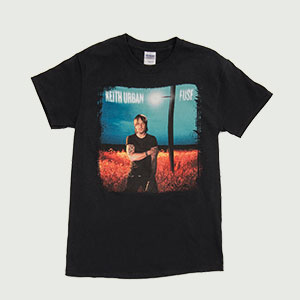
What goes into becoming a Wearables Trendsetter? Great work, of course. We showcase their exceptional garments and decoration and dive into the design inspiration that informs their efforts. Here, master decorator Andy Anderson of Anderson Studio Inc. (asi/121990) talks about one of his signature music tees. Visit Wearablesmag.com to see more examples from our Trendsetters.
Print and Release
This T-shirt was for Keith Urban’s Fuse album release. The image “was his album cover, so we had to hit it pretty close to keep them happy,” Anderson says.
Under the Skin
“This was a particularly hard print because the photo of Keith was so small,” says Anderson. “Then we had to capture the delicate background hues and skin tones, as well as the blurred type.”
Trust the Process
For Anderson’s signature photorealistic prints, simulated process is his go-to technique. This Keith Urban shirt features a 12-color simulated process print, with color separation done by the shop’s in-house artist.
